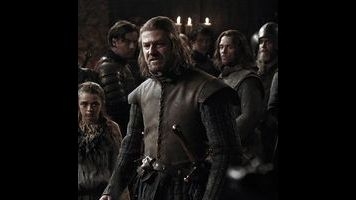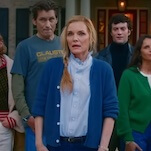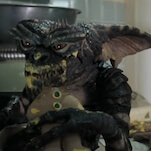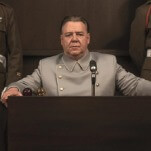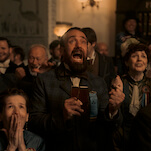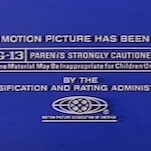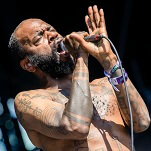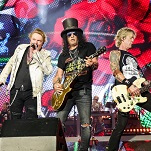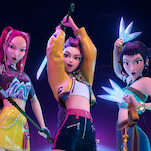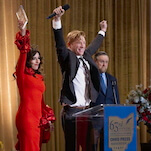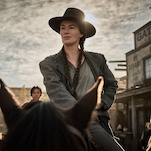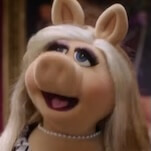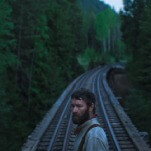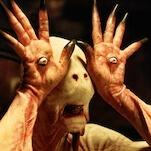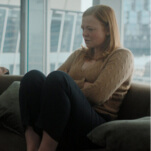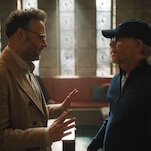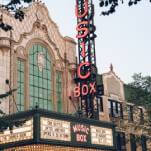On one hand, that’s a thrilling promise for a season finale to make. “If it looked like we’d blown up everything you thought you know about Westeros before, wait until you meet this ancient pyrokinetic elf,” D.B. Weiss and David Benioff seem to say with “The Children.” So many characters have died, so many allegiances and consolidations of power have been torn asunder that this might as well be a universe in which one prominent quest—the one with the heaviest doses of mysticism and fantasy magic—concludes in a Carcosan tangle of roots and a promise that Bran Stark will “find” what he has “lost.” You’ll have to wait until next spring to find out what the Warg behind the three-eyed raven is getting at; the stubborn refusal to provide many of the finale’s most basic conclusions is the most frustrating part of “The Children.” If you’re in this for concrete answers, then you’re basically in the same position as The Hound, stuck begging for deliverance while Arya plucks a bag of silver from your belt. It’s cruel, but hey: The show needs to be frugal with every last shred of source material at this point in its run.
I have to wonder if the unmoored feeling some Game Of Thrones viewers had this year has anything to do with the season’s ever-fluid status quo. I wouldn’t describe this as a misstep—I’ve been taken with the way Game Of Thrones brashly dismantled itself across the past 10 episodes—but a TV show that never gives you anything to grasp on to for more than two or three episodes at a time can be an alienating viewing experience. The game of thrones could often be a game of withholding in season four, so it’s a bit jarring when characters suddenly start taking or receiving exactly what they want in “The Children.” Cersei strolls into her brother’s chambers and embraces him without fear, making the sept sequence in “Breaker Of Chains” look all the more mishandled. Arya sets sail for Braavos, looking for all the world that she’s going to pull a “I’m the king of the world”—not that that portending positive things for Leonardo DiCaprio. Tyrion not only escapes King’s Landing with his life, but also takes his father down in the process. Not that we have confirmation that Tywin is dead or that Tyrion is truly secure in that crate next to Varys, but such is the partially dissatisfying nature of a cliffhanger, a storytelling device that gets off on being withholding.
“The Children” is more an ellipsis than a period (or an exclamation mark, even with all of its swashbuckling excitement), but in that it closely mirrors the final chapters of a single volume in a multi-part book series. The doors need to be left cracked open for season five, which is also how the pileup of storylines makes its way into the finale—even at 66 minutes, it’s crazy to reconstruct this episode in your head and realize “Oh yeah: This whole thing starts with Jon Snow…” Todd VanDerWerff has a For Our Consideration essay on deck that tackles Game Of Thrones shifting sense of storytelling, so I won’t horn in on that territory, but the latter episodes of this season—and “The Children” especially—give themselves a tremendous amount of content to balance in the space of an hour. Considering this, it’s curious that HBO hasn’t given Weiss and Benioff the timeslot freedom FX seemingly affords all of its originals now, binge-watching-friendly running lengths ballooning and contracting as the story dictates. It’s a carryover of momentum from “The Watchers On The Wall,” but “The Children” gives its action sequences more breathing room than its dialogue-driven ones—though with all the negotiating that happens this week, maybe that’s a good thing. In this instance, director Alex Graves handles negotiations between swords and fists with greater panache, continuing the trend of dashing adventure filmmaking embedded within season four. The confrontation between Brienne and The Hound is as breathtaking as it is devastating.
But from my ludicrous, digging-too-deep vantage point, the most rewarding aspects of “The Children” are thematic. In the grand television scheme, Game Of Thrones is a highly entertaining second-tier prestige series, of the type that readily populates this current era of Orphan Blacks and Justifieds. It’s a blockbuster, not a game changer, but all through season four the series still did fantastic work between the lines. Season four is a season of preparation, preservation, and protection, and the finale honors that as heralds of a new world shove aside the old guard and swords rattle over the privilege to make that new world a reality. The First Men referred to Bran’s savior and its kind as The Children, but you could also apply that label to any of the characters left standing and poised to headline season five. It’s too bad one of those will be Jon Snow, since season four felt like it forgot what to do with Kit Harington and his character; the loss of Ygritte cuts deepest as the loss of Jon’s most compelling relationship.
But Daenerys and Arya and Brienne and Cersei survive “The Children” and season four, an intriguing statement on feminine power within Game Of Thrones that’s only slightly undercut by Tyrion strangling Shae to death. (The more I think about it, the more Tyrion’s mini revenge flick becomes the part of “The Children” that sits least comfortably with me. It’s payoff, but it’s tawdry payoff that’s lit and shot like a much cheaper show than Game Of Thrones.) At the end of a season when certain events in certain septs contributed to the Seven Kingdoms’ He-Man Woman Haters’ Club vibe, it’s heartening to see that much of Dany’s new world is made in her image. She must make compromises that wind up making her look like a leader in the old world, but the scenes in Meereen tonight show just how far the character has come and how she’s grown into her responsibilities and duties. The Dany of seasons two or three would not be so flexible, would be too blinded by her vision and her desires to even consider putting the dragons in chains. There’s an acceptance there—and a strength, mirrored by the way Brienne beats the snot out of The Hound—lacking in other pretenders to the Iron Throne. (The difficulty of the situation is written all over Emilia Clarke’s face, an impressive emotional display toward creatures that are just 1s and 0s in some faraway computer.) The decision to not do the thing that would bring her the most satisfaction is in Arya’s refusal to grant Sandor Clegane’s final wish, too—because there are other people to consider. Westeros is a world without mercy, but that doesn’t mean it’s a place without compassion.
But it is, for the time being, a place without conclusion. There’s a sense of optimistic possibility that permeates the end of “The Children,” one that doesn’t square with the ravages of season four but still manages to send the show into hiatus on an appropriate note. So much of these episodes revolved around clearing the show’s slate, an act referenced, intentionally or not, by the waterfall that transitions out of Tyrion’s escape and into Arya’s passage to Braavos. Escape and imprisonment factor heavily into “The Children” as well, particularly in terms of how the survivors are increasingly unbound by custom, belief, and tradition. It’s here that the upbeat ending is the most earned, because there are literal and figurative freedoms to be enjoyed by these characters. In their meeting on the rocky cliffs outside the Bloody Gate, Brienne of Tarth and Arya Stark recognize one another as kindred spirits. In an attempt to win Arya’s trust and to help fulfill her vow to the girl’s mother, Brienne compares her own bucking of conventions with those of Arya. But ultimately Arya forges her own path into the future, because the path into the new world of Game Of Thrones is one you have to blaze independently. In the old world, they like to amass power and influence over large groups of people—but that kind of practice leaves you vulnerable to being plugged with a crossbow while you’re sitting on the toilet. “The Children” also reminds us that there is no safety in Westeros, and thus no safety in numbers. That could be true of the new world as well as the old one, but we’ll have to wait 10 months or so to know for sure.
Stray observations:
- Thanks again to Brandon Nowalk for covering “The Watchers On The Wall” last week. I hope the many arrow injuries he endured in the process heal swiftly.
- A pair of visual cues calling back to another show that liked to pose questions more than it liked to answer them: The aforementioned waterfall serves the same purpose as Twin Peaks’ establishing shot of Snoqualmie Falls. And doesn’t the overhead shot of Ygritte on the funeral pyre make Rose Leslie look almost exactly like Laura Palmer?
- And that’s it for The A.V. Club’s newbies coverage of Game Of Thrones’ fourth season. Thanks as always to everyone who came out to read these reviews and discuss these episodes the last 10 weeks. I’ll see you back in Westeros next spring, presumably!
